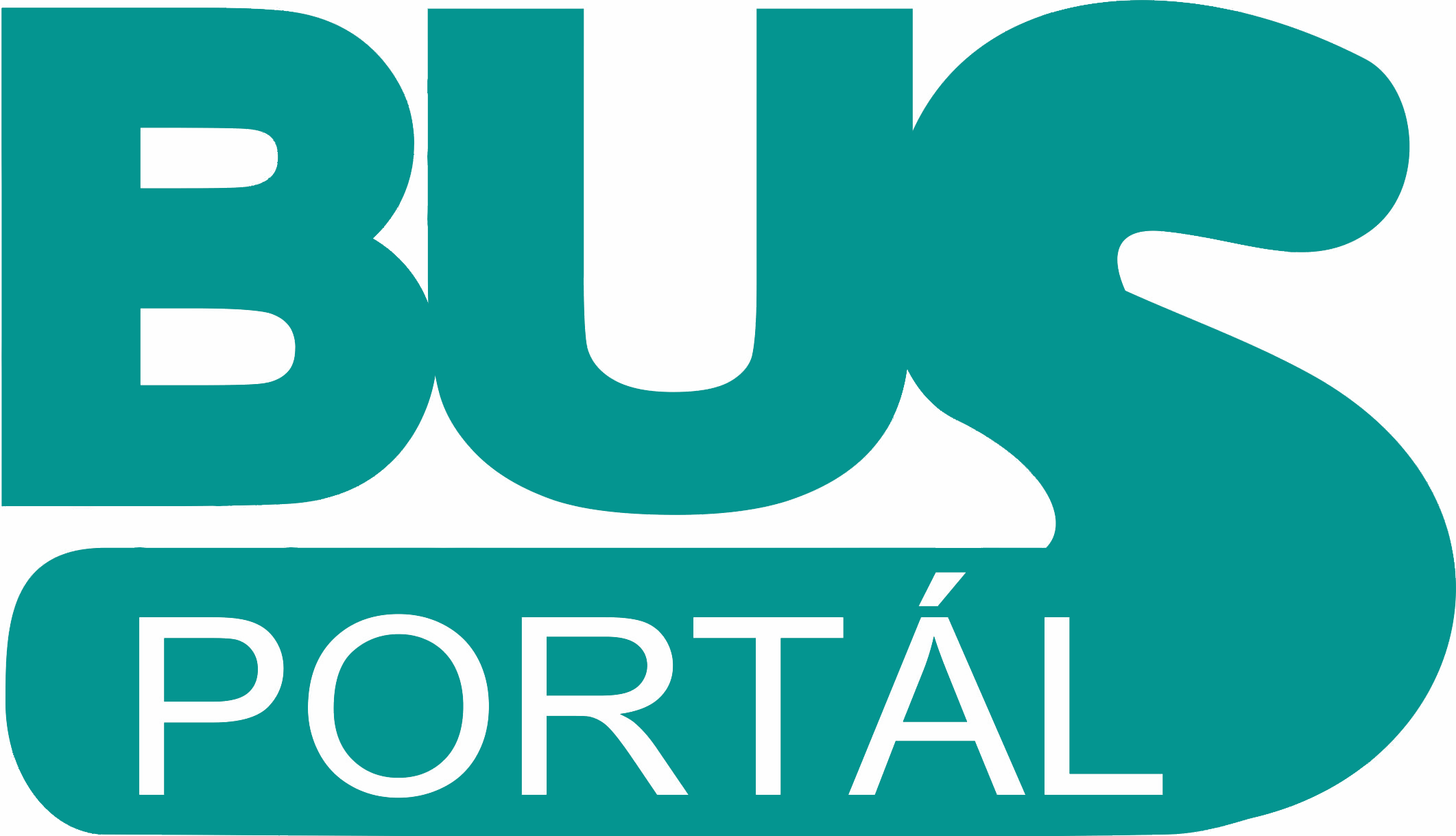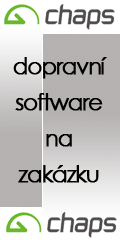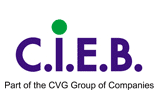Technika
V kategorii E-Acessibility hájil barvy České republiky i projekt společnosti APEX Jesenice "Systém TYFLOSET".
Celkem tři české projekty se probojovaly do finále mezinárodní soutěže eInclusion Awards 2008 vyhlášené Evropskou komisí za účelem zvýšení povědomí a uznání projektů a řešení, které prostřednictvím ICT mohou pozitivně ovlivnit sociálně znevýhodněné nebo digitálně vyloučené skupiny občanů. Soutěžilo se v následujících sedmi kategoriích: Důstojné stáří, Opomíjení mladí lidé, Geografické začlenění, Kulturní rozmanitost, Počítačová gramotnost, e-Dostupnost (e-Accessibility) a Veřejné služby pro všechny (inkluzivní e-Government). Vyhlášení výsledků a slavnostní ocenění vítězů každé kategorie proběhne během ministerské konference k eInclusion 1. prosince 2008 ve Vídni. Z celkem 469 přihlášených projektů postoupilo do finále této prestižní soutěže 35 projektů z celé Evropy, z toho tři projekty z České republiky. V kategorii kulturní rozmanitost se mezi pět nejlepších probojovala obecně prospěšná společnost ERUDIS se svým projektem „Internetové kluby ČH@VE“, který podporuje rozvoj informační a počítačové gramotnosti u znevýhodněných dětí 2. stupně ZŠ, kteří mají ztížený přístup k moderním informačním technologiím, zejména k počítači a internetu. V kategorii e-Acessibility budou barvy České republiky hájit dokonce dva projekty. Prvním úspěšným finalistou je projekt společnosti APEX Jesenice - „Systém TYFLOSET“ (elektronický orientační a informační systém pro nevidomé a slabozraké) s řešením usnadňujícím navigaci nevidomých občanů v prostředcích MHD a vybraných budovách v několika městech ČR. Druhým finalistou v této kategorii je společný projekt ČVUT a firmy MEDICTON group „Systém I4Control“, jenž představuje tzv. speciální brýle, které nahrazují myš u počítače a umožňují ovládání počítače pouhým zrakem. V pořadí zemí podle počtu finalistů se Česká republika spolu s Holandskem zařadila na třetí místo. Ke zviditelnění českých projektů v soutěži podporující začleňování občanů do informační společnosti významně přispěl workshop „eInclusion Awards“ pořádaný 11. srpna tohoto roku Ministerstvem vnitra za podpory náměstkyně ministra vnitra Lenky Ptáčkové - Melicharové, která k výsledkům soutěže říká: „Jsem velmi ráda, že české projekty obstály v tvrdé evropské konkurenci a věřím, že umístění v soutěži eInclusion Awards 2008 pomůže rozšíření českých řešení v dalších zemí Evropy.“ Součástí ministerské konference eInclusion Awards byla výstava, kde soutěžící prezentovali své projekty v jednotlivých stáncích. Dne 1.prosince 2008 navštívil stánek firmy APEX evropský komisař pan Gerard Comyn a předal jednateli společnosti APEX zlatou pamětní medaili pro finalistu soutěže. Téhož dne si prohlédla stánek firmy APEX náměstkyně ministra vnitra ČR Lenka Ptáčková. TI APEX
kdy karosárna Sodomka začala s výrobou autobusů. Jubilejní linkový Crossway pro ČSAD Karviná ze skupiny 3ČSAD. Velká fotoreportáž z výrobního závodu Irisbusu Iveco CR Vysoké Mýto z letošního října.
Na sklonku letošního jubilejního roku, kdy například uplynulo 80 let od zahájení výroby autobusů ve Vysokém Mýtě, slaví Iveco Czech Republic, a. s. další významnou událost – překonání hranice 100 000 vyrobených autobusů. Jubilejním vozem se stal linkový autobus Crossway, jehož uživatelem je ČSAD Karviná a.s. Tato společnost je součástí skupiny 3ČSAD (ČSAD Havířov, Karviná, Frýdek-Místek), která patří k největším severomoravským provozovatelům linkové i městské dopravy. Výroba autobusů byla ve Vysokém Mýtě zahájena v roce 1928 u předchůdce dnešní továrny - firmy Sodomka, která tímto rozšířila svůj sortiment proslulých karoserií osobních automobilů. V roce 2008 slaví narozeniny autobusová výroba v karosárně Sodomka Do znárodnění firmy v roce 1948 bylo vyrobeno 749 autobusů. Pod novým názvem Karosa se poté stále rostoucí výroba zaměřila výhradně na autobusy a postupně přicházely výrobkové řady RO, RTO, Š 11, 700 a 900. S řadou 900 se firma výrazně prosadila i v zahraničí, a to především na západoevropských trzích. Jako významná součást skupiny Irisbus Iveco je zde vysokomýtský výrobní závod velmi úspěšný i se svými novými výrobky, které od roku 2005 postupně řadu 900 nahradily a rychle si u uživatelů získaly značnou oblibu (během posledních dvou let, kdy jsou vyráběny výhradně nové modely, vzrostla produkce o téměř 30 procent). V současné době se ve Vysokém Mýtě vyrábějí modely Arway, Crossway, Recreo a Crossway LE a jejich produkce meziročně skokově roste. V letošním roce výroba poprvé v novodobé historii firmy pokoří hranici 3 000 autobusů . Během krátké doby od zahájení své výroby se stala velmi žádanou především poslední novinka – autobus kategorie low entry Crossway LE, který je od poloviny roku nabízen i v městské třídveřové verzi. Na přelomu letošního roku celkový počet vozů nové řady překročí hranici 6 000 vyrobených kusů. Jsou tak vytvořeny nejlepší podmínky pro pokračování úspěšné tradice výroby autobusů ve Vysokém Mýtě i v budoucnosti. Počty vyrobených autobusů podle jednotlivých výrobkových řad: Řada RO RTO Š 11 700 900 Vyráběné v letech 1947-57 1958-72 1965-81 1981-99 1996-2006 Počet vyrobených kusů 2921 14 969 26 669 37 166 13 071 Výroba v Iveco Czech Republic, a. s. za uplynulých 6 let: Rok 2003 2004 2005 2006 2007 2008 Počet vyrobených autobusů 1521 1700 1825 2371 2698 3020 Iveco navrhuje, vyrábí a prodává rozsáhlou řadu lehkých, středně těžkých a těžkých užitkových vozů, vozidla pro důlní/stavební průmysl, městské a meziměstské autobusy a speciální vozidla pro požární účely, terénní použití, obranu a civilní ochranu. Iveco zaměstnává přes 26 000 lidí a vlastní 27 výrobních závodů v 16 zemích světa, přičemž používá nejvyspělejší technologie vyvíjené v pěti výzkumných střediscích. Kromě Evropy působí také tato společnost v Číně, Rusku, Austrálii, Argentině, Brazílii a Jižní Africe. Více než 4 600 servisních středisek ve více než 100 zemích zajišťuje technickou pomoc po celém světě všude tam, kde jezdí vozidla Iveco. TZ Iveco CR BUSportál gratuluje vysokomýtským a celému českému autobusovému průmyslu k úspěchu a přidává poměrně čerstvou fotoreportáž z Iveco CR letos v říjnu. Zatím vyšlo: Na návštěvě v Iveco CR - lakovna včetně kataforézy. Připravujeme ještě třetí část - záběry z nového centrálního skladu náhradních dílů Iveco.
pomůže Škodě při dalších projektech. Parametry autobusu.
Než se vodíkový autobus, který vyvíjí ŠKODA ELECTRIC, dostane na pravidelné linky, čeká jej řada zkoušek a testů. „Po jejich skončení bude sloužit městské hromadné dopravě ve středočeských Neratovicích. Po dva roky budeme pečlivě zkoumat všechna data z provozu, která nám pomohou analyzovat vlastnosti a případně vylepšovat některé parametry. Je to velmi důležité i pro další naše projekty – budeme mít zpětnou vazbu z unikátního vývoje, který byl pro nás novým polem působnosti,“ říká Michal Ruml. Parametry autobusu Karoserie 12m IRISBUS Citelis 48 kW PEM vodíkový palivový článek Sekundární zdroje energie: Trakční akumulátor -typ Li-Ion (max. 100 kW, 26 kWh, 422V, LiFePO4) Ultrakapacitory ( celkem 17, 8F, 780V, max. 200 kW, využitelná energie 0,32 kWh ) Rekuperace energie 4 kompozitní tlakové nádrže (celkem 820l, 35 MPa ~ 20 kg H2) Trakční motor asynchronní 120 kW Dojezd až 250 km Pohotovostní hmotnost 14 t Celková hmotnost 18 t Maximální rychlost 65 km/h Spotřeba H2 7,5 kg / 100 km což odpovídá přibližně 20 l / 100km nafty Vodíkový autobus ... Podrobný materiál agentury J.L.M. Česká verze vozu je jedinečná Plzeňská firma je díky kooperaci na projektu autobusu s vodíkovým pohonem připravena na možný růst zájmu o podobná vozidla ve světě. Zatím po Evropě jezdí jen desítky ekologických autobusů, jejich výroba totiž nemá dlouhou historii: Jejich počty ale neustále rostou. Na tomto poli se ale angažují i velké firmy z oboru, jako je třeba Daimler, MAN a další,“ vysvětluje Luděk Janík z Ústavu jaderného výzkumu Řež. Verzí vozidel, která využívají vodík, je ve světě několik. Ta ´česká´ je výjimečná právě tom, že má díky hospodárnému nakládání s energií delší dojezd, než mnohá ostatní. „Jednoduše řečeno: umíme uchovávat energii, která jinak při běžném provozu přichází vniveč. Tomto systému se říká rekuperace – třeba při brzdění jsme schopni vznikající energii nasměrovat do kapacitorů a využít ji později. Třeba ve chvíli, kdy je zapotřebí vyšší výkon – například při rozjíždění,“ říká Michal Ruml. Autobus samozřejmě může využívat energii ze všech tří zdrojů – z palivového článku, z akumulátorů i kapacitorů. „Náš úkol byl vyřešit tok energií tak, aby si motor autobusu ´bral´ vždy ten nejvýhodnější mix. Tak by měl co nejmenší spotřebu vodíku, tedy co největší dojezd. To se nám daří, dnes umí vozidlo na jedno načerpání vodíku ujet 250 kilometrů,“ říká Michal Ruml. Vodíková vozidla slouží v MHD Vozidla na vodíkový pohon se ve světě využívají zejména pro potřeby městské hromadné dopravy. „Je samozřejmě třeba zajistit i speciální čerpací stanice na vodík. A například v Německu se tato výstavba nezaměřuje pouze na městské aglomerace. Vznikl projekt ´vodíkových´ dálnic, kde jsou zřizovány čerpací stanice v pravidelných odstupech tak, že dnes jde s vodíkovým vozidlem velká část země projet zcela bez problémů,“ vysvětluje Luděk Janík. A proč Ústav jaderného výzkumu Řež zvolil jako partnera právě plzeňskou ŠKODA ELECTRIC? „Z historie různých světových projektů jsme věděli, že výrobci se vždy potýkali s elektrickou částí projektu. Je velmi náročné zajistit právě optimální toky energií a podobně. Proto jsme se rozhodli spojit s odborníky a v českém prostředí byla právě plzeňská ŠKODA ELECTRIC logickou a správnou volbou. To dokládá i rychlost, s jakou se podařilo projekt uskutečnit,“ říká Luděk Janík. Vývoj nového vozidla byl možný i díky penězům z grantů, které se podařilo autorům projektu získat. Jízdní vlastnosti se blíží trolejbusům A jaký pocit budou asi mít první cestující v novém vodíkovém autobusu? Paradoxně nikoliv jako v autobuse. „Nevědět, o jaké vozidlo jde, asi by pasažéři hádali, že sedí v trolejbuse. Chybí pro autobus tak typické vibrace, rozjezdy jsou plynulejší, jiný je zvuk vozidla. Prostě jízdní vlastnosti se spíš blíží trolejbusu,“ říká škodovácký projektový manažer. Řidiči nového autobusu budou muset projít speciálním školením. „Řízení není nijak složité, ale obsahuje několik nových prvků, se kterými je třeba se seznámit,“ vysvětluje Michal Ruml. I stanoviště řidiče je podobnější tomu v trolejbuse, než v autobuse. Zkušební provoz zahájí řežský výzkumný ústav na jaře příštího roku. Škoda se pochlubí vodíkem i na výstavách Nové vozidlo se má stát i marketingovým tahákem, který bude propagovat alternativní pohony, ekologický přístup k dopravě. „Máme připravený atraktivní design s motivem modré barvy a bublinek vodíku. A jdeme mnohem dál – v interiéru budou zavěšené ploché obrazovky, na kterých názorným a velmi jednoduchým způsobem představíme cestujícím systém, jak se vlastně vodík využívá, jak autobus funguje. Chceme totiž autobus použít i na veletrzích a nejrůznějších akcích s dopravní či ekologickou tématikou,“ sděluje Luděk Janík. K marketingovým a osvětovým účelům bude chtít nové vozidlo využít i ŠKODA ELECTRIC. „Zkušenosti z hybridního pohonu využijeme pro vývoj našich nových vozidel v oboru trolejbusů,“ říká Michal Ruml. Nový vodíkový autobus využívá pokročilé technologie s cílem optimalizace energetických toků ve vozidle. Základním zdrojem energie je elektřina z palivových článků, dále baterie Li-Ion pro ukládání energie z palivových článků a pokrytí energetických nároků v náročnějších jízdních režimech a ultrakapacitory pro rekuperaci energie při brzdění a k pokrytí proudových špiček při rozjezdu. Palivový článek je zařízení, které při elektrochemické reakci přeměňuje chemickou energii přiváděného paliva (vodíku) s oxidačním činidlem (kyslík ze vzduchu) na elektrickou energii. Oproti tepelným strojům s generátorem el. energie dosahují palivové články při výrobě elektrické energie vyšších účinností. To je dáno zejména tím, že přeměna energie je přímá, nikoliv přes mezistupně (tepelnou a mechanickou), jako je tomu např. u spalovacích motorů. Zdroj: Škodovák 11/2008 "pdf"
Belgický výrobca Van Hool dostal prvé objednávky na hybridnú verziu svojich mestských autobusov.
35 hybridných autobusov objednala belgická dopravná spoločnosť De Lijn. Štyri hybridné vozidlá pôjdu pre holandského objednávateľa Connexxion, ktorý ich bude prevádzkovať v oblasti južného Holandska, kde Holanďania začínajú experimentovať s alternatívnymi spôsobmi vo verejnej doprave.
Akce se konala v sobotu 6.12.2008 pod záštitou Prahy 6.
Ranní sraz účastníků byl před muzeem VETERAN CAR ŠTANGL, kde jsou kromě automobilů vystaveny i obrazy Vácava Zapadlíka. Před muzeem proběhla i malá výstava účastníků stejně jako později na Vítězném náměstí. Trasa jízdy vedla ze Sibiřského náměstí 10 přes Vítězné náměstí na Hradčanské náměstí a zpět.
Dražba e-mailem bude probíhat do půlnoci 31. prosince. Momentálně (12.12.2008 v 14:57 hodin) dražitel nabízí 5000 korun.
Kalendář vznikl ve spolupráci subjektů viz seznam autobusů podle měsíců. Je neprodejný. Získat ho můžete tedy pouze jako dar od jednoho z vydavatelů, což jsou společnosti a osoby viz níže a ČSAD SVT Praha jako provozovatel BUSportálu. Dražený kalendář je z úzké série bez jakéhokoli názvu firmy. Vyvolávací cena byla 500 Kč. Dražba bude probíhat do půlnoci 31. prosince. Výtěžek bude poukázán jako sponzorský dar plzeňské plicní onkologii. Svoje nabídky posílejte e-mailem na braunova@svt.cz se jménem a adresou. Nejvyšší nabídka bude obratem zveřejněna. Identifikaci dražitelů zveřejníme jen s jejich souhlasem. Prosíme jen vážně míněné nabídky. Počet návštěvníků do 29.12.2008 v 20:00: 798 Stav dražby: 12.12.2008 v 14:57 5000 Kč Dagmar Braunová LEDEN PRAGA RND / ČSAD Jihotrans ÚNOR Škoda 706 RTO LUX / Probo Trans BŘEZEN Karosa ŠL 11 1307 / ČSAD autobusy Plzeň DUBEN Škoda 706 RTTN a Karosa NO 80 / ČSAP Nymburk KVĚTEN Škoda 706 RTO LUX / Martin Uher ČERVEN Karosa ŠD 11 EvropaBus / ČSAD Jihotrans ČERVENEC Škoda 706 RTO CAR / ČSAD autobusy Plzeň SRPEN Škoda 706 RTO CAR vyhlídkový / ČSAP Nymburk ZÁŘÍ Škoda 706 RTO LUX / ČSAD Jihotrans ŘÍJEN Škoda 706 RO / Ladislav Tetera LISTOPAD Karosa ŠD 11 2036 / Petr Hubený PROSINEC Škoda 706 RTO LUX / ČSAP Nymburk
Záběry interiéru a detaily. Autokar jako hrdina zpravodajství TV Nova.
Autokar to neměl vůbec lehké. Viz www.youtube.com Ve třetím, posledním materiálu doplníme technické informace a dojmy z jízdy z předváděcího dne 3.12.2008. Úvodní záběry.
Vozidlo na platformě Fiat Ducato s motorem Iveco vyrábí společnost MAVE.
Minibus pro 15 cestujících (13 sedících) a 2 invalidní vozíky slouží u Plzeňských městských dopravních podniků od června 2008. Podrobnosti k minibusu přinesl časopis Československý Dopravák 3/2008.
23 vozidel znamená rekordní roční prodej. Zdravý nárůst přináší možnost rozvíjet a zkvalitňovat služby prodejce Turancar .
"Máme radost, že došlo opět k rozšíření skupiny spokojených zákazníků využívajících těchto zajímavých vozidel a dá se říci, že zejména v Praze a středních Čechách je běžné midibusy ISUZU Turquoise na komunikacích potkávat," konstatuje Viktor Wiesner ze společnosti Turancar . Důležitým krokem byl start masovějšího prodeje meziměstského provedení autobusu ISUZU označovaného jako Class II Interurban. Jedná se o totožnou platformu vozidla jako u turistické varianty, kde bylo drobnými změnami v konstrukci vozidla a především odebráním výbavy docíleno nižší hmotnosti, a tím i vyšší obsaditelnosti (45 cestujících včetně stojících). Meziměstské provedení má také nižší cenu. Samozřejmostí pro vůz s možnosti využití pro provoz mezi obcemi i v městských a příměstských aglomeracích jsou dvoje dvoukřídlé pneumatické dveře a možnost manipulace s kočárkem či invalidním vozíkem; midibus má na zadní snížené plošině dost místa pro obojí. Za příplatek je též možné midibus Isuzu Class II dovybavit hydraulickou plošinou pro nakládání invalidního vozíku. Osm těchto vozidel jezdí v tomto roce ve výseči Ústí nad Labem - Praha - Karlovy Vary, kde je možno je pravidelně vídat. "V následujícím roce 2009 bude poostupně docházet k posilování servisní a prodejní sítě vozidel ISUZU. Plánované satelity by měli přinést možnost servisu vozidel těch majitelů, kteří nemají centrální pražský servis přímo u nosu a též by mělo dojít k posílení prodeje zájemcům, kteří s nákupem váhali kvůli nejistotě v dostupnosti servisu a náhradních dílů, " informuje Viktor Wiesner, který děkuje všem zákazníkům za jejich přístup, trpělivost a snahu a dodává: " Každý majitel společnosti, každý autobus a každý řidič je pro nás důležitý z hlediska budování a vylepšování kvality služeb. Každé prodané vpozidlo, každý poznatek či zkušenost se promítá do cíle poskytovat co nejlepší služby." Turancar
na podvozku MAN se představil 3.12.2008 v Zastávce u Brna.
Prvním oficiálním zastoupením společnosti NOGE pro Česko a Slovensko je společnost Rolina bus . Podrobnější informace, detailní záběry a postřehy z testovací jízdy přineseme o víkendu.



















